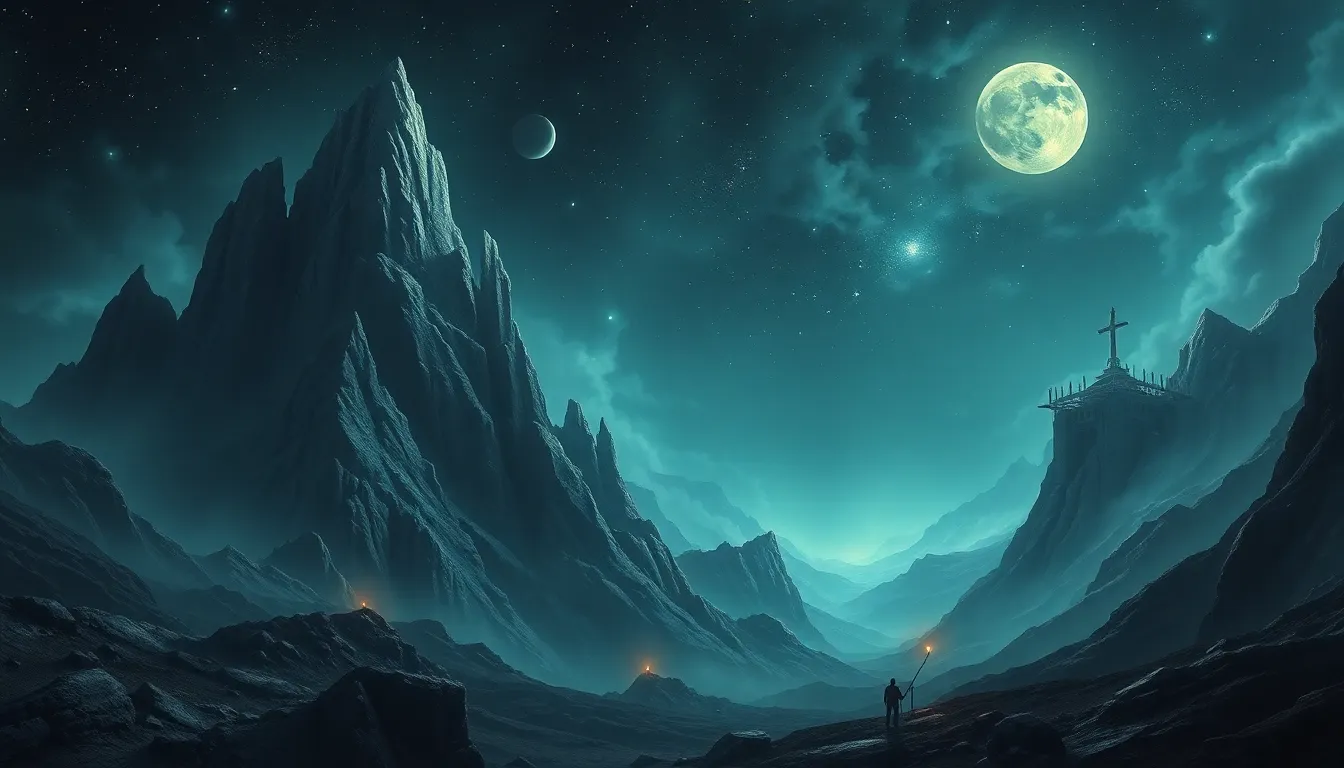End of the World Myths: Legends That Define Our Existence
I. Introduction
End of the world myths are narratives that predict the destruction or transformation of the world, often imbued with moral or existential significance. These myths are a tapestry of human thought, reflecting our deepest fears and hopes about existence, mortality, and the future.
Throughout history, different cultures have crafted their own apocalyptic tales, serving as both cautionary tales and sources of hope. Understanding these myths is essential as they not only provide insight into cultural values but also illustrate how societies grapple with the concept of an ultimate end.
This article aims to explore various end of the world legends, examining their historical context, psychological implications, modern interpretations, and their enduring relevance in today’s world.
II. Historical Context of Apocalyptic Thought
A. Origins of end of the world myths in ancient civilizations
End of the world myths can be traced back to some of the earliest civilizations:
- Mesopotamian and Egyptian beliefs: Ancient Mesopotamian texts, like the Epic of Gilgamesh, reflect on the theme of divine judgment and catastrophe. Similarly, Egyptian mythology speaks of cyclical destruction and rebirth, particularly through the death and resurrection of Osiris.
- Pre-Columbian narratives: Indigenous cultures in the Americas, such as the Aztecs and Maya, had complex cosmologies that included cycles of creation and destruction, often linked to celestial events.
B. Evolution of apocalyptic themes through history
As societies evolved, so too did their apocalyptic myths:
- Influence of religion and philosophy: Major religious texts, such as the Bible and the Bhagavad Gita, incorporated themes of apocalypse, emphasizing moral consequences and the possibility of salvation.
- Societal changes and their reflection in myths: Historical events, such as wars, plagues, and revolutions, have often inspired new apocalyptic narratives, reflecting societal anxieties.
III. Major End of the World Myths Across Cultures
A. The Christian Apocalypse: Revelations and the Second Coming
The Book of Revelation in the Christian Bible outlines a vivid vision of the end times, including the return of Christ, the final judgment, and the establishment of a new heaven and earth. This narrative has profoundly influenced Western thought and art.
B. Hinduism and the Cycle of Yugas: Destruction and Renewal
In Hindu cosmology, the universe undergoes cycles of creation and destruction known as Yugas. The current age, Kali Yuga, is marked by moral decline, leading to eventual renewal through divine intervention.
C. The Mayan Calendar and the 2012 Phenomenon
The Mayan calendar’s end date of December 21, 2012, sparked widespread speculation about an impending apocalypse. Although the date passed without incident, it highlighted contemporary fears about environmental and social collapse.
D. Norse Ragnarök: The Twilight of the Gods
Ragnarök signifies a series of events leading to the death of gods and the rebirth of the world in Norse mythology. It embodies themes of conflict, fate, and renewal, reflecting the cyclical nature of existence.
IV. Psychological and Sociological Implications
A. The role of fear and hope in apocalyptic narratives
Apocalyptic myths evoke both fear of the end and hope for a new beginning. They often serve as mirrors to our anxieties about the future and our desire for redemption and renewal.
B. How myths shape societal behavior and values
These narratives influence cultural norms and behaviors, providing frameworks for understanding morality, justice, and societal responsibilities. They can unify communities under shared beliefs or create divisions based on differing interpretations.
C. The impact of contemporary events on the resurgence of end of the world beliefs
Modern crises, such as climate change, pandemics, and geopolitical tensions, have led to a revival of apocalyptic thinking, as people seek explanations for their fears and uncertainties.
V. Modern Interpretations and Representations
A. End of the world themes in literature and film
Contemporary literature and cinema frequently explore apocalyptic themes, reflecting societal fears. Works like Cormac McCarthy’s “The Road” and films like “Mad Max” portray dystopian futures shaped by human actions.
B. The influence of technology and science on contemporary myths
Advancements in technology and science have reshaped apocalyptic narratives, with themes of artificial intelligence, nuclear warfare, and space exploration prompting new myths about the end of civilization.
C. The role of social media in spreading apocalyptic narratives
Social media platforms amplify apocalyptic messages, allowing myths to spread rapidly. Viral content can lead to mass movements, illustrating how modern communication shapes our understanding of existential threats.
VI. Environmental Concerns and Their Ties to Apocalyptic Myths
A. Climate change and its representation as an apocalyptic threat
Climate change is often framed as an impending apocalypse, with predictions of catastrophic events leading to widespread destruction and suffering. This narrative drives activism and policy change.
B. The connection between ecological disasters and mythological narratives
Many cultures have myths that describe ecological disasters as moral lessons, emphasizing humanity’s relationship with nature. These narratives remind us of the consequences of environmental neglect.
C. Activism and hope in the face of impending doom
In response to apocalyptic fears, grassroots movements and global campaigns emerge, advocating for ecological sustainability and social justice as forms of resistance against predicted doom.
VII. Cultural Resilience and Adaptation
A. How societies cope with apocalyptic fears through cultural practices
Many societies engage in rituals, storytelling, and art to process apocalyptic fears, transforming anxiety into cultural expression and resilience.
B. Myths as tools for understanding and navigating existential crises
Myths provide frameworks for people to make sense of their lives, offering guidance during times of upheaval. They can foster community and shared identity in the face of uncertainty.
C. The emergence of new myths in response to contemporary challenges
As new challenges arise, such as technological advancements and climate crises, fresh myths are born, reflecting the contemporary human experience and our quest for meaning.
VIII. The Future of End of the World Myths
A. Predictions for how these myths may evolve
As society progresses, apocalyptic myths are likely to adapt, integrating new scientific understanding and cultural perspectives, potentially leading to more nuanced interpretations of end times.
B. The potential for new narratives in a changing world
New narratives that emphasize cooperation, sustainability, and collective action could emerge, offering hope and a vision for a better future rather than merely focusing on doom.
C. The relevance of ancient myths in modern society
The enduring nature of ancient myths highlights their significance in contemporary discourse, serving as reminders of our shared humanity and the cyclical nature of existence.
IX. Case Studies: Myths in Action
A. Analysis of specific communities that embody apocalyptic beliefs
Some communities actively live out their apocalyptic beliefs, forming societies centered around preparedness or spiritual awakening, showcasing the diverse expressions of these myths in action. For example:
- The Amish: While not explicitly apocalyptic, their lifestyle choices reflect a rejection of modernity in favor of traditional values, often seen as a response to perceived societal decline.
- Survivalist communities: Many individuals and groups prepare for perceived impending disasters, embodying a modern interpretation of apocalyptic thought through stockpiling resources and building self-sufficient enclaves.



